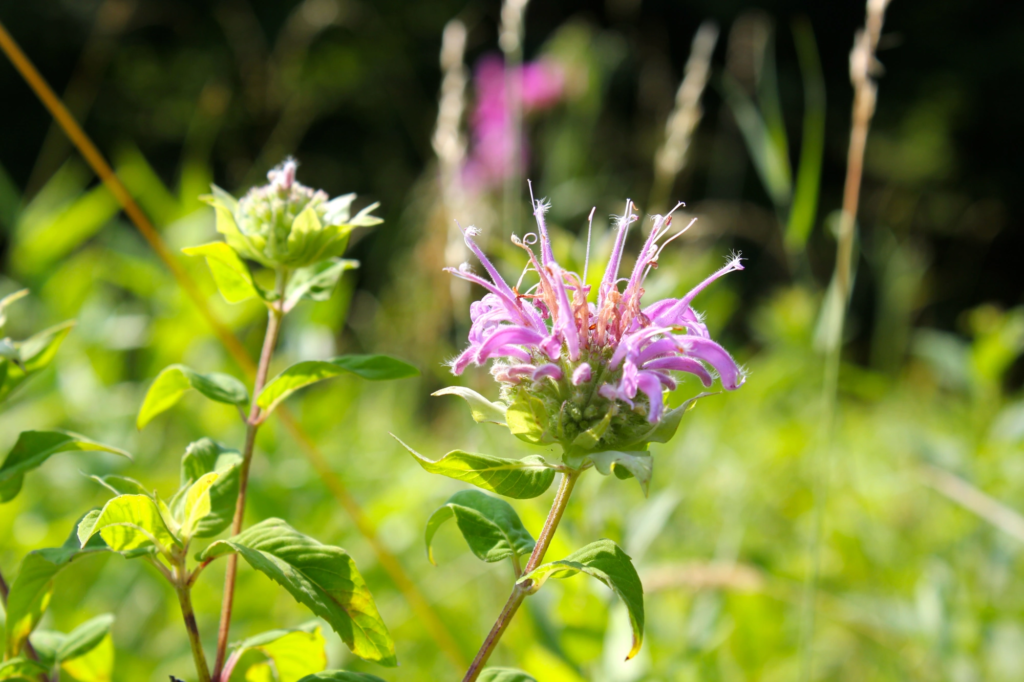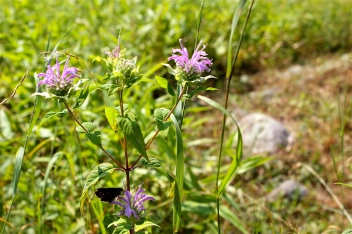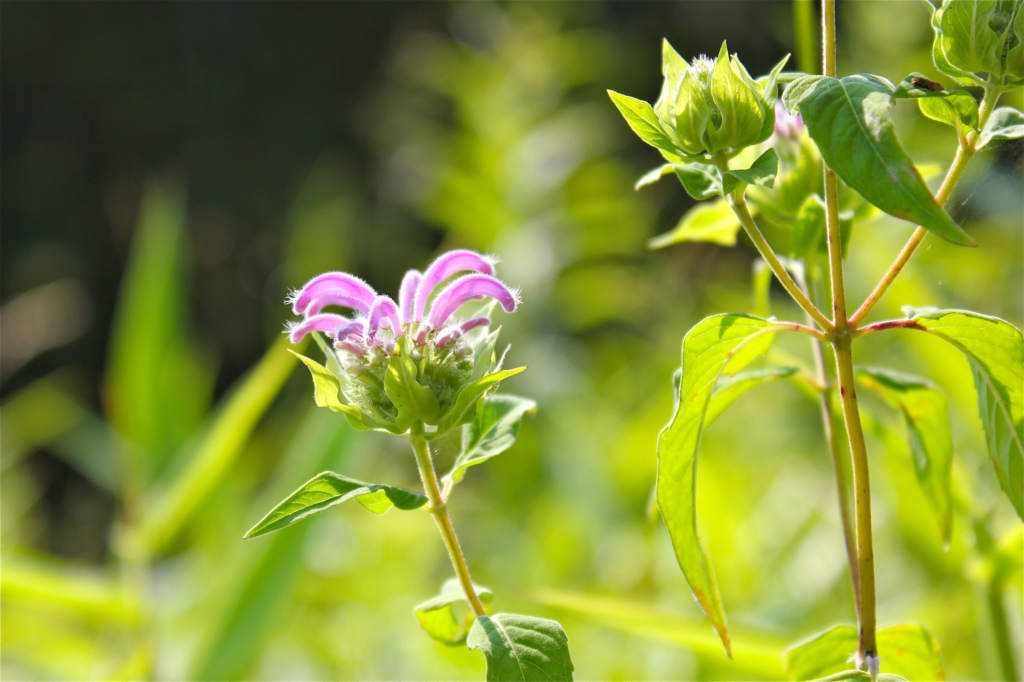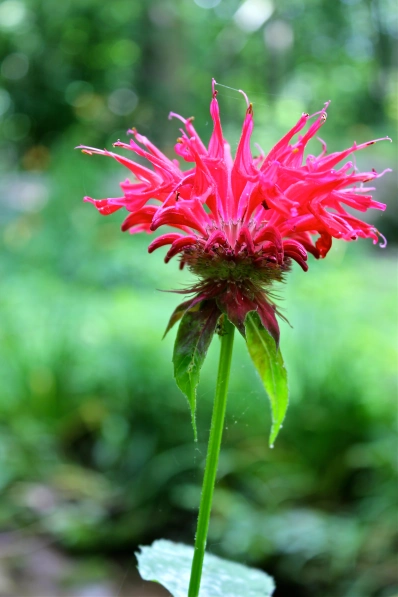
Description #
Monarda fistulosa, commonly called wild bergamot, is a native perennial that occurs in dryish soils on prairies, dry rocky woods and glade margins, unplanted fields and along roads and railroads. It is a clump-forming, mint family member that grows typically to 2-4′ tall.
Provides color and contrast for the herb garden, wild garden, native plant garden, meadow or naturalized area. May be used in the perennial border, but is simply a less colorful selection than the similar-in-appearance Monarda didyma and its many cultivars (the beebalms). Of note, this plant is tolerant of black walnut.
There are many species of Monarda, but all have the following things in common: the plants have square stems; the leaves are simple, serrated, opposite, and have petioles; there is a distinct smell of mint when the leaves are crushed; the large flowers arise from a whorl, and sometimes the whorls are stacked up on the stem; the flowers of Monarda are tubular; each flower has two lips: the upper lip is long and narrow; the wider lower lip has three lobes. In the wild, flower colors include red, pink, and light purple.
Common names for plants in this genus include bee balm, horsemint, bergamot, and Oswego Tea.
Butterflies, hummingbirds and bees use Monarda as a nectar source. It is commonly planted in gardens to attract wildlife and also to provide a “naturalized” appearance in a border. (Beware: white-tailed deer will eat this plant.) Monarda prefers full-sun and moist soils. Some species spread easily (even aggressively) by underground stolons. Bloomtime is mid- to late summer.
Native Americans made use of the antiseptic properties of Monarda to treat wounds and throat infections. A tea made from the leaves was also used as a stimulant and as a treatment for headaches. As a kitchen herb, it was sometimes used to season wild game, especially birds. The leaves contain thymol, which today is an active ingredient in mouthwash.
Pictures #






